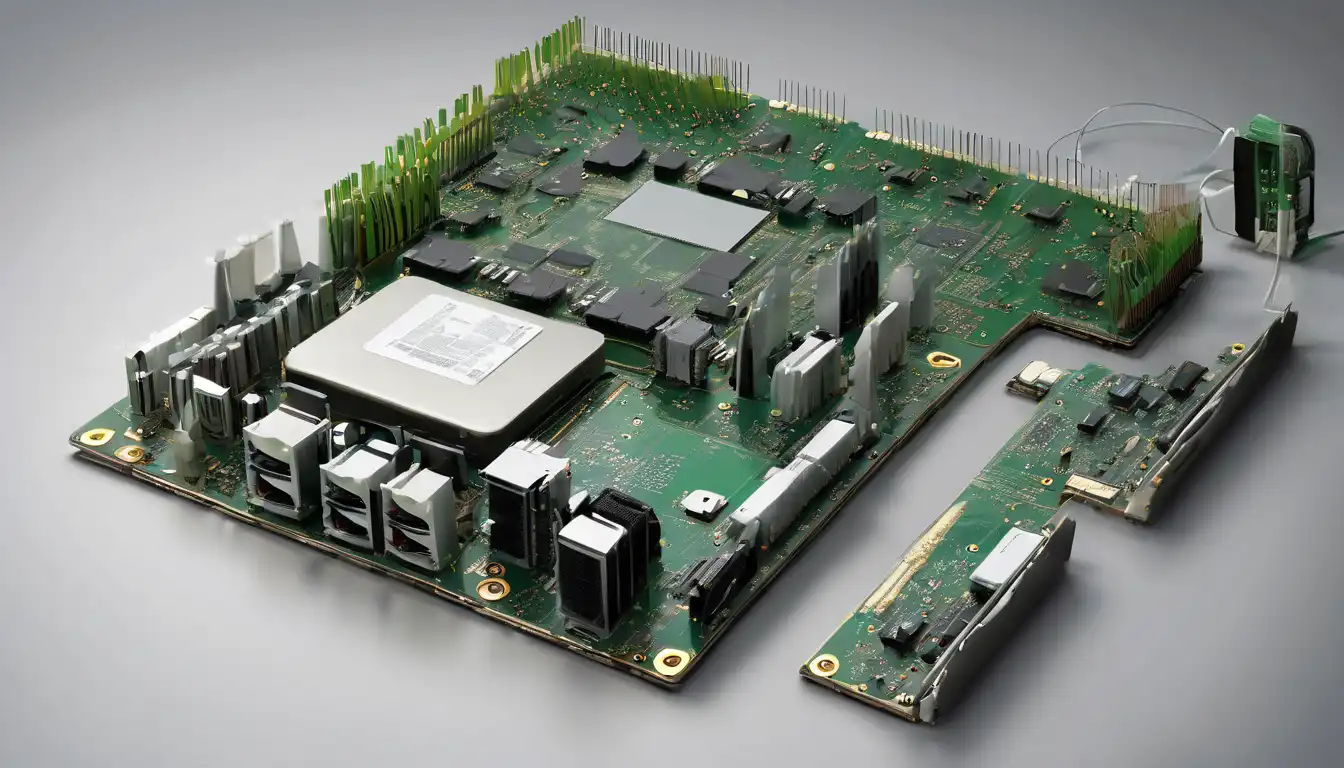Introduction to Sustainable Computing
As environmental concerns continue to grow, the technology industry faces increasing pressure to adopt sustainable practices. Sustainable computing represents a crucial shift toward eco-friendly hardware solutions that minimize environmental impact while maintaining performance. This comprehensive guide explores the innovative approaches and technologies driving the green computing revolution.
What Makes Hardware Sustainable?
Sustainable hardware encompasses several key characteristics that distinguish it from conventional computing equipment. Energy efficiency stands as the primary consideration, with components designed to deliver maximum performance while consuming minimal power. Manufacturers achieve this through advanced power management systems, low-power processors, and optimized thermal designs.
Material selection plays an equally important role in sustainable hardware. Environmentally conscious manufacturers prioritize recycled materials, biodegradable components, and substances with lower environmental toxicity. The entire product lifecycle—from manufacturing to disposal—receives careful consideration to ensure minimal ecological footprint.
Energy-Efficient Processors and Components
Modern processors have made remarkable strides in energy efficiency. Companies like Intel and AMD now produce CPUs that deliver exceptional performance while consuming significantly less power than previous generations. These processors incorporate sophisticated power management features that dynamically adjust energy consumption based on workload demands.
Beyond processors, other components contribute to overall system efficiency:
- Solid-state drives (SSDs) consume less power than traditional hard drives
- Efficient power supply units (PSUs) with high efficiency ratings
- Low-power memory modules optimized for energy conservation
- Advanced cooling systems that reduce fan energy consumption
Sustainable Manufacturing Practices
The journey toward sustainable computing begins long before products reach consumers. Leading hardware manufacturers have implemented comprehensive environmental programs that address every stage of production. These initiatives include reducing water consumption during manufacturing, minimizing waste generation, and implementing closed-loop recycling systems.
Many companies now publish detailed sustainability reports that transparently document their environmental impact and improvement goals. Third-party certifications like ENERGY STAR and EPEAT provide consumers with reliable indicators of a product's environmental credentials, helping them make informed purchasing decisions.
Server and Data Center Innovations
Commercial computing environments represent some of the most significant opportunities for sustainable hardware implementation. Data centers, which consume enormous amounts of energy, have become focal points for green technology innovation. Advanced cooling technologies, including liquid cooling and free-air cooling systems, dramatically reduce energy consumption compared to traditional air conditioning.
Server manufacturers have developed specialized hardware optimized for energy efficiency in data center environments. These systems feature:
- High-density computing capabilities that reduce physical space requirements
- Intelligent power management that adjusts to workload fluctuations
- Modular designs that facilitate easy upgrades and repairs
- Heat reuse systems that capture and repurpose waste heat
Consumer Electronics and Sustainability
The consumer technology market has embraced sustainable principles with increasing enthusiasm. Smartphones, laptops, and tablets now frequently feature eco-friendly designs and materials. Manufacturers have made significant progress in reducing the environmental impact of these devices through several approaches:
Modular design allows consumers to replace individual components rather than entire devices, extending product lifespan and reducing electronic waste. Many companies have established robust recycling programs that responsibly handle end-of-life products, recovering valuable materials for reuse in new devices.
Renewable Energy Integration
Sustainable hardware often incorporates features that facilitate integration with renewable energy sources. Solar-powered computing devices, while still emerging, represent an exciting frontier in green technology. More commonly, hardware manufacturers design products to work efficiently with variable power inputs, making them compatible with solar and wind energy systems.
Energy storage solutions have also evolved to support sustainable computing. Advanced battery technologies not only provide longer runtime but also feature improved environmental profiles through reduced use of hazardous materials and enhanced recyclability.
Lifecycle Management and Circular Economy
The concept of a circular economy has gained significant traction in the computing industry. Rather than following a linear "take-make-dispose" model, sustainable hardware embraces principles of reuse, repair, and recycling. Manufacturers increasingly design products with disassembly in mind, using standardized components and avoiding proprietary fasteners that complicate repairs.
Extended product support and software updates play crucial roles in hardware sustainability. By maintaining security and functionality updates for longer periods, manufacturers help extend the useful life of computing equipment, reducing the frequency of replacement and associated environmental impact.
Future Trends in Sustainable Hardware
The future of sustainable computing promises even more innovative solutions. Researchers are exploring biodegradable electronics, quantum computing with lower energy requirements, and neuromorphic chips that mimic the energy efficiency of biological brains. As artificial intelligence and machine learning continue to advance, we can expect to see hardware specifically optimized for these workloads with minimal energy consumption.
Industry collaboration will be essential for driving further progress. Standardization of sustainable practices, shared research into new materials, and collective commitment to environmental goals will accelerate the adoption of eco-friendly hardware across all computing sectors.
Implementing Sustainable Computing in Your Organization
Organizations looking to adopt sustainable computing practices can take several practical steps. Begin by conducting an energy audit of existing hardware to identify improvement opportunities. When purchasing new equipment, prioritize products with recognized environmental certifications and energy efficiency ratings.
Consider implementing power management policies that automatically adjust device settings for optimal energy conservation. Regular maintenance and timely upgrades can extend equipment lifespan, while proper recycling procedures ensure responsible end-of-life management. Employee education about sustainable computing practices can significantly amplify the impact of these initiatives.
Conclusion
Sustainable computing represents not just an environmental imperative but also a business opportunity. Eco-friendly hardware solutions deliver tangible benefits through reduced energy costs, improved corporate reputation, and compliance with increasingly stringent environmental regulations. As technology continues to evolve, the integration of sustainability principles into hardware design will become increasingly sophisticated, offering even greater environmental and economic advantages.
The transition to sustainable computing requires commitment from manufacturers, businesses, and individual consumers alike. By choosing eco-friendly hardware solutions and supporting companies that prioritize sustainability, we can collectively reduce the environmental impact of our digital infrastructure while maintaining the technological progress that drives modern society.
